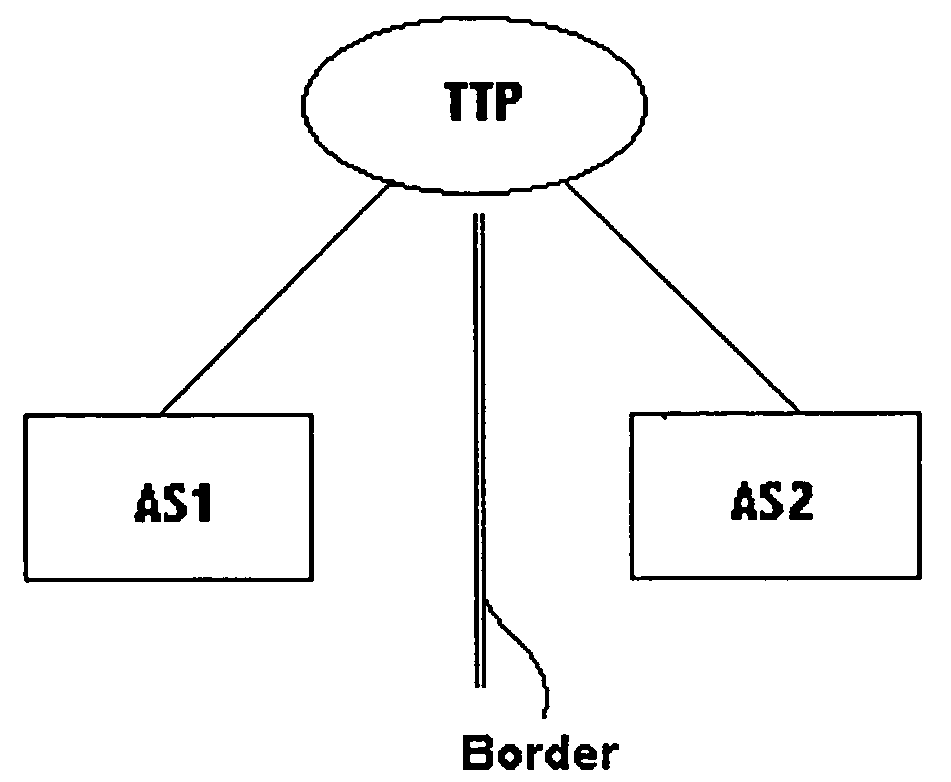Multicast peering
a peering and multicast technology, applied in the field of multicast, can solve problems such as being restricted or terminated, and achieve the effect of reducing the amount of information
- Summary
- Abstract
- Description
- Claims
- Application Information
AI Technical Summary
Benefits of technology
Problems solved by technology
Method used
Image
Examples
Embodiment Construction
[0026] In a preferred implementation of the business model in accordance with the present invention, a dedicated-to-many transmission of multicast packets from one location to unlimited numbers of receivers is created using the Protocol Independent Multicast—Sparse Mode version 2 (PIM-SM v.2), with a co-located and restricted Rendezvous Point (RP), located at the TTP facility. Transmissions will consist of a number of separate channels, with each channel itself consisting of a number of separate sub-channels. In initial operations, each TTP channel will consist of 4 separate sub-channels, in order to provide the necessary information for the Staggered Erasure Correction (SEC), which is described in detail subsequently, and to provide for auxiliary text and computer control information. The delivery of information in a TTP channel shall be referred to as a stream, where it is implicitly understood that this stream consists of separate sub-streams, one for each of the sub-channels. Th...
PUM
 Login to View More
Login to View More Abstract
Description
Claims
Application Information
 Login to View More
Login to View More - R&D
- Intellectual Property
- Life Sciences
- Materials
- Tech Scout
- Unparalleled Data Quality
- Higher Quality Content
- 60% Fewer Hallucinations
Browse by: Latest US Patents, China's latest patents, Technical Efficacy Thesaurus, Application Domain, Technology Topic, Popular Technical Reports.
© 2025 PatSnap. All rights reserved.Legal|Privacy policy|Modern Slavery Act Transparency Statement|Sitemap|About US| Contact US: help@patsnap.com


